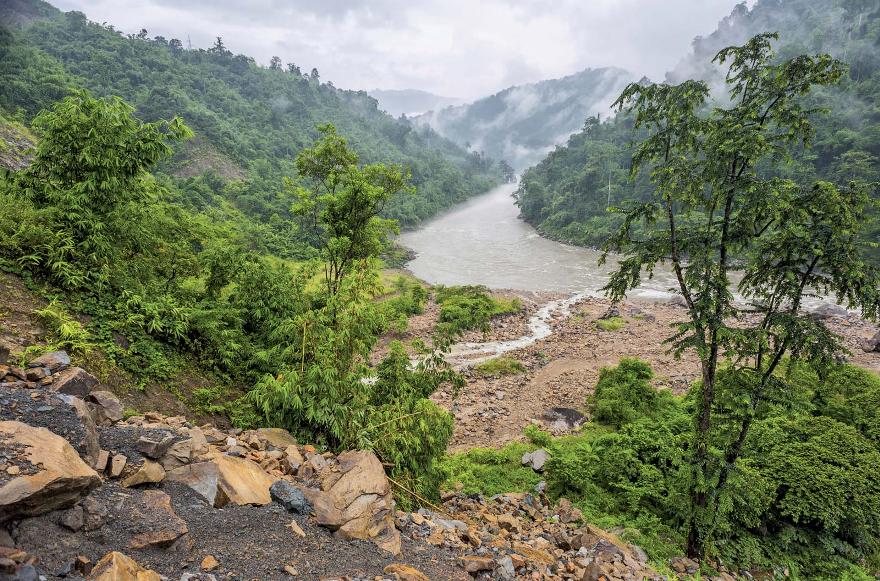A proposal by the Department of Power, Government of Arunachal Pradesh for diversion of over 70 ha of forest land for a power transmission line is under examination by the Union Ministry of Environment, Forest & Climate Change (MoEFCC),
The proposal submitted on March 20, 2020 is still under examination as there were queries raised by MoEFCC in May 2020. According to information available, the queries have been addressed and the proposal is now under examination.
The transmission project in question is a 132kV single-circuit transmission line from Tawang to Lumla. It is a component of the “Comprehensive Scheme for Strengthening of Transmission & Distribution System in Arunachal Pradesh.”
What is noteworthy is that the entire project is coming up on forest land. Accordingly, forest land diversion to the tune of 70.864 ha has been sought. The total period for which the forest land diversion has been sought, which is to say the useful life of the project, is 75 years.
The “Comprehensive Scheme for Strengthening of Transmission & Distribution System in Arunachal Pradesh” was approved by the Union ministry of power in October 2014, at a total investment of around Rs.3,200 crore. The project aims at improving the power scenario in the northeastern state, by way of constructing new transmission lines and substations.
The entire portion of the proposed route of the 132kV line falls under the Tawang Forest Division.
In a note, the Department of Power, Government of Arunachal Pradesh, observed that after careful route survey, the route alignment of the proposed 132kV line was finalized along the Tuwang-Lumla state highway route, as much as possible, as it would be the most feasible route from the point of view of construction, operation and maintenance.
However, the entire portion of the proposed route of the 132kV line falls under the Tawang Forest Division. The forest land requirement of 70.864 ha is the minimum requirement for the transmission line, which will connect the 132kV Tawang substation to the 33kV Lumla substation. The single-circuit line, mounted on double-circuit towers, will have a running length of 40 km.
Incidentally, the cost of forest diversion has been worked out at Rs.16.94 lakh. This cost covers compensatory afforestation of diverted land (including soil and moisture conservation), habitat fragmentation cost and ecosystem services losses due to forest diversion. It may be noted that there is no human resettlement cost involved in this forest land diversion.
The “Comprehensive Scheme for Strengthening of Transmission & Distribution System in Arunachal Pradesh” involves, among other things, setting up of 33 new 132kV transmission lines (which will be initially charged at 33kV) and 24 new 132/11kV substations.
Peculiarity of Arunachal Pradesh
It is estimated that nearly 90 per cent of Arunachal Pradesh’s land is mountainous and criss-crossed by rivers. Towns and villages are scattered over the state’s vast area of some 84,000 sqkm. The state is very sparsely populated with the population density being just 13 per cent per sqkm. Due to this, the distance between villages and towns is amongst the longest in India. Reaching electricity to all inhabitants therefore becomes a very challenging task, not just due to the vast distance between human concentration centres, but also due to the difficult topography.
Featured photograph, sourced from britannica.com shows Kameng river and forest cover in Arunachal Pradesh



